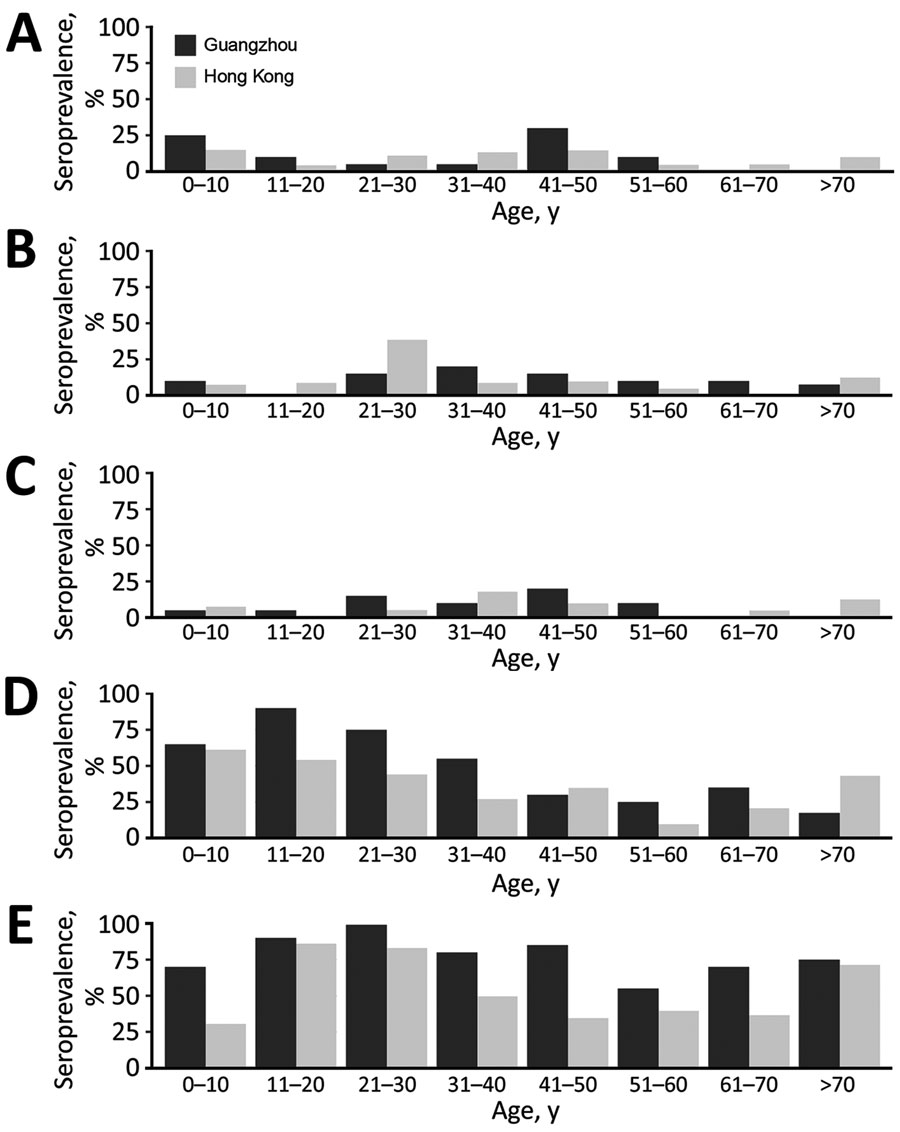Volume 28, Number 5—May 2022
Research
Determining Existing Human Population Immunity as Part of Assessing Influenza Pandemic Risk
Figure 1

Figure 1. Seroprevalence of hemagglutination inhibition antibodies to different swine influenza viruses, by age group and location, in study to determine existing human population immunity as part of assessing influenza pandemic risk. A) A/swine/Hong Kong/NS4003/2016 (EA); B) A/swine/Guangdong/104/2013 (EA); C) A/swine/Hong Kong/NS301/2013 (TR); D) A/swine/Hong Kong/1436/2016 (pdm09); E) A/swine/Hong Kong/4348/2016 (BD-like H3). BD, Binh Duong; EA, Eurasian avian-like; pdm09, 2009 pandemic strain; TR, triple-reassortant.
Page created: February 24, 2022
Page updated: April 19, 2022
Page reviewed: April 19, 2022
The conclusions, findings, and opinions expressed by authors contributing to this journal do not necessarily reflect the official position of the U.S. Department of Health and Human Services, the Public Health Service, the Centers for Disease Control and Prevention, or the authors' affiliated institutions. Use of trade names is for identification only and does not imply endorsement by any of the groups named above.